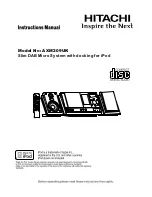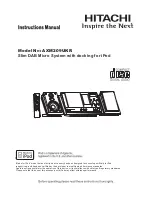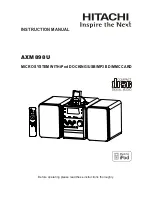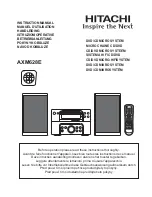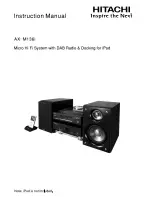
5 – TC Works Reverb—High-cut filter
TASCAM DM-24 Effects
21
High-cut filter
This filter can be used to cut off the upper frequen-
cies of the reverb signal.
Use PODs 3 and 4 on row 2 of the screen.
HICUT
Sets the frequency at which the filter oper-
ates. Use POD 3 to select a value. The lower limit is
20 Hz, and the higher limit is 16 kHz.
ATT
Short for “attenuation”—the amount by which
the high-cut filter cuts the upper frequencies. Use
POD 4 to set this value from –40.0 dB to 0 dB in
0.1 dB steps.
Space editor
These four parameters allow you to set the basic
reverb type (row 3, labeled
SPACE EDITOR
).
SHAPE
allows you to set the basic shape of the sim-
ulated room in which the sound is being reflected to
produce the reverberation effect.
Turn POD 1 to select from the following list (a small
representation of the room shape appears on the left
of the screen as you make these changes):
•
HALL
—a hall-shaped room (basically a cube)
•
H.SHOE
—(horseshoe) a room where one wall is flat,
and the other walls curve round.
•
PRISM
—a prism-shaped space with two parallel
walls focusing down to a wedge (similar to many
auditoria).
•
FAN
—even more wedge-shaped than the prism set-
ting.
•
CLUB
—a T-shaped space, with a recessed stage
area.
•
SMALL
—a smaller, more intimate version of the
cube.
SIZE
The size of the space. Units are arbitrary, and
may be set from 0.04 to 4.0 in the following steps:
0.04, 0.05, 0.06, 0.08, 0.10, 0.13, 0.16, 0.20, 0.25,
0.32, 0.40, 0.50, 0.63, 0.80, 1.0, 1.3, 1.6, 2.0, 2.5, 3.2,
4.0.
W-DIFF
Wall diffusion—the “liveness” of the room
space, and the amount that the sound is scattered. Set
a value from –50% to +50% I 1% steps.
WIDTH
Not, strictly speaking, the width of the sim-
ulated room, but the stereo width of the reverb signal
(which is affected by the width of the room). Set
from 0% (mono point source) to 100% (full width) in
1% steps.
Decay characteristics
The decay can be set for three bands independently,
allowing, for example, the treble portion of the sound
can continue to reverberate after the bass and mid
sounds have decayed, giving a bright quality to the
reverb.
The crossover points for the three bands can be set
independently.
Use the four pods in row 4 and the two pods in row 5
(labeled
DECAY
) to set the band times, as well as a
“scale” which allows fine-tuning of the times without
having to turn the PODs an excessive number of
times.
LOW, MID, HIGH
Each of the three bands can be
set independently, in a range from 0.25 s to 9.99 s
and from 10.0 s to 64 s (1024 steps in total).
RANGE
The overall range for these three bands
(and therefore the number of times the PODs must be
turned to set a value) an be set to one of three values:
4
s,
16
s and
64
s.
X-over
The two crossover frequencies to divide the
sound spectrum into three bands can be set. Each of
these frequencies can be set between values of
20 Hz
and
16 kHz
. Use PODs 1 and 3 on row 5 to set these
values.
Summary of Contents for DM-24
Page 1: ...DM 24 Digital Mixing Console to EFFECTS MANUAL...
Page 31: ......








































